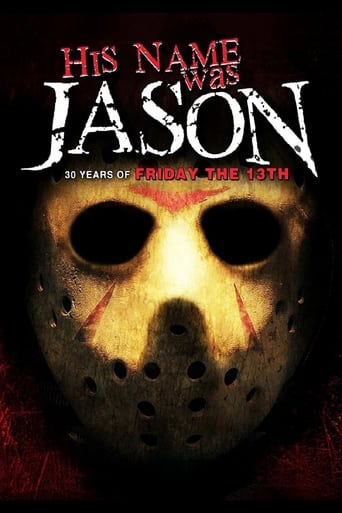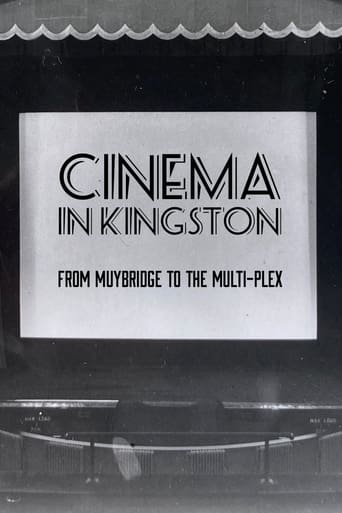VividSimon
Simply Perfect
SnoReptilePlenty
Memorable, crazy movie
Chirphymium
It's entirely possible that sending the audience out feeling lousy was intentional
Zandra
The movie turns out to be a little better than the average. Starting from a romantic formula often seen in the cinema, it ends in the most predictable (and somewhat bland) way.
deadmanjones
One of the participants of this documentary (line producer? I can't remember) sums two facts up perfectly:a) If you tried to think of things that could go wrong on a film set, you still wouldn't come near to what actually happened. The flash flood is SPECTACULAR; watching a desert turn to a wall of water upon which props and film equipment float away is unbelievable. b) Gilliam tried to scale down what couldn't be scaled down. He was too desperate to put his vision on screen.Ultimately the film finishes as unsatisfyingly as its subject; there is no ending, and the conclusion to the events is in equal measures inevitable and unexciting (how could watching the insurance men be anything but).We eagerly await the sequel, Found in La Mancha, in which our heroes make the film and win every award on the planet for it.
kelshawd
"It can't exist. Because if it does exist, it's too painful." Terry GilliamLost in LaManchaLiterary themes of any depth endure across time. After Hours and The Matrix reflect elements of a prodigal journey. Peckinpah's westerns and Scorcese's street films illustrate baser forms of the survival instinct in a lawless frontier. This documentary rivals the value of titles of the classical canon.In the documentary Lost in LaMancha there is the fracture between Terry Gilliam's romantic vision (obsession?) with The Man Who Killed Don Quixote and the rational view of the modern film industry. Gilliam's phenomenology is elevated, romantic and remote from consensus reality. And Like Quixote, consensus reality wins out. And once again, film and fiction are built on a timeless theme.Both Don Q and Don G are middle-aged and, in a sense, "taking stock" of their life experiences. Quixote collects personal effects: a run-down steed, some make-shift armor, and a basin for a helmet. For Gilliam, the quest begins with a summation of the Python-esqe animation (for example, the Sisyphus figure pushing the movie reel up the hill in futility only to see it sail down the other side,) and references to the Munchausen debacle. "Is Gilliam pushing the stone up the hillside AGAIN?" Both shore up what they need for the journey ahead.Gilliam's windmills play out as the "force majuer," elements out of his control. Rains wash away the production equipment, celebrity schedules, contracts and deadlines hit and miss on the calendar, and failing health of one essential actor (deemed by "Dr." Gilliam as psychosomatic,) bring production to a halt. Quixote assails his windmills frontally, sword in hand as Sancho Panza tells him "They are only windmills." Gilliam waits for the wind to stop oscillating the blades of his windmills and his Sancho Panza (Phillip Patterson,) finally says "Look. You're not going to make the 'film' YOU want to make." In other words, "This is not a windmill, this is a crisis. Rochefort is NOT coming back, so get a clue. Dosomething or I will leave." Dropping Rochefort is not in Gilliam's agenda. Can Don G's will conquer the day to day grief of the film business? Or does he grow extravagant in his romance?In any case, Quixote's bottom line is to march forth in battle to earn merit of knighthood from any on-looking monarch willing to dub him. Gilliam's monarchs (the financiers,) don't bequeath titles of chivalry, but of stewardship. There lies the effects of time on a well-worn tale. Quixote's (and thus Cervantes',) culture and historic period served as a backdrop for Q's need to create a world he could exist in vs. the more pessimistic view of consensus reality. In Gilliam's world, consensus reality itself takes on magnanimous proportions beyond mythic fantasies. After Rochefort's back injury, rain storms and the bean-counting, number-crunching paradigm of the insurance company halt production, one wonders: Maybe Cervantes was right and didn't know it. Maybe giants ARE real. They do exist, and they are painful.This is a very well-done documentary with depth and substance that infrequently visits mortals, and almost consoles me over the failure of Gilliam's project.
MovieAddict2016
Terry Gilliam's had a controversial career. His "Brazil" in 1985 upset Universal because it had a "sad" ending, so they cut it apart and replaced the finale with a "happier" version. Gilliam hated their hack job of his work, and illegally screened his original version for a critics' circle -- they voted it one of the best films of the year. Soon Gilliam got his way and the film was released as he had originally intended, and it's now considered a classic.A few years later he released "The Adventures of Baron Manchusen," a fantasy flop that went some $20 million over budget and collapsed at the box office. He quit directing for a while and, when he returned, started work on "Twelve Monkeys." It wasn't the best of shoots and his perfectionism resulted in eccentric, intolerable shooting schedules.In 1998 "Fear and Loathing in Las Vegas" was released and the MPAA hated it, threatening to give it an X rating for its drug content. Released alongside "Godzilla," it flopped, but to this day remains a cult classic.So it's reasonable to say Gilliam is quite an eccentric personality and has had a tumultuous career."The Man Who Killed Don Quixote" was going to be his new film until it crashed. The production was halted because Gilliam couldn't find an actor to play Quixote, flash floods destroyed equipment and one of his shooting locations was in fact a NATO airfield which created quite a problem for the filmmakers.Gilliam's film probably would have been a great twist on the classic tale and I'm sure his eccentric vision would have suited it well. He also had a cameo by Johnny Depp in the movie and it's quite funny as shown in this documentary detailing the events of the production.Gilliam recently said he's going to start production on this again and finish it up. I hope so, it really does look like a promising film.In terms of this documentary itself, it's very insightful and a must-see for any Gilliam fan or aspiring director -- it's entertaining and important, and a great guide on how NOT to make a movie.
Howlin Wolf
... That man is, of course, Terry Gilliam; and although all the painstaking effort we are shown reminds us that film-making is a collaborative process, it is difficult not to have the most sympathy and admiration for a director who has cherished the realisation of this project for reportedly over a decade. At the present time of writing, the spectre of the film still hangs around Gilliam's neck like the apocryphal albatross.Not only is this superb documentary successfully intimate to make its watchers want the tremendous promise that we see to be fulfilled; it also chronicles the setbacks so grimly, that to overcome them could only be heralded as a monumental triumph. In an era when interminable franchises continue to hook the drones into theatres, Quixote must come to fruition if only to show that passion and ambition will ultimately make more history than any amount of calculated profit-maximisation.I myself am eager to see this undertaking finally meet success in the future... I wish the best of luck to all parties involved.





